Who else sometimes feels overwhelmed by the choices of yoga styles out there? And how do you pick the best yoga mat for your style? We get it! Nowadays, the practice of yoga is incredibly diverse, with various yoga styles offering unique approaches on a physical, emotional, and spiritual level. Maybe you’re new to yoga or a dedicated practitioner of a certain style. What are the most common yoga styles and their characteristics? And how does my choice of yoga mat affect my practice in these styles? We shall answer these for you!
Choosing the right yoga style is essential to align with your personal goals and preferences. Equally important is selecting the best yoga mat that suits your practice. In this guide, we’ll explore some of the most commonly practiced Yoga styles – Vinyasa Flow, Ashtanga Vinyasa, Hatha, Power Yoga, and Yin/Restorative/Yoga Nidra. We’ll give a brief overview of each style, its characteristics, and origin. Of course, we’ll also explain what the best yoga mat choice is for that style and why.
Before We Dive In…
If you would like to get a better understanding of the different types of yoga mats out there, the composition and price range of them, then please refer to our article Choosing The Perfect Yoga Mat. Here, we outline the types and compositions of yoga mat in more depth.
1. Vinyasa Flow Yoga
Vinyasa Flow Yoga is probably THE most widely practiced yoga style in the West nowadays. Characterized by creative transitions and flows, Vinyasa is a dynamic and flowing style of yoga that connects breath with movement. It emphasizes flexibility, balance, and strength through a continuous sequence of postures and Vinyasas. Unlike other styles, “Vinyasa Flow” can be interpreted freely and vary from slow and mindful to dynamic and creative. Therefore, you will often find levelled Vinyasa classes for different levels of practitioners

The roots of Vinyasa Flow Yoga trace back to Hatha Yoga. It gained prominence in the 20th century, with influential yoga teachers such as T. Krishnamacharya and his students, including B.K.S. Iyengar and Pattabhi Jois. Vinyasa Flow emphasizes the synchronization of breath with movement, creating a fluid and continuous sequence of postures. This style combines the traditional aspects of yoga with a more contemporary approach, making it accessible to a wide range of practitioners.
The best yoga mat for Vinyasa should have excellent grip and stability. Vinyasa Flow can often be physically challenging and you might get sweaty. It’s important to have a mat that will be non-slip and sweat-proof. Vinyasa Yoga includes many standing and balancing poses. Make sure that your mat is NOT too thick, as this can make stability and balance trickier. Alignment lines can also be super helpful for an even and safe alignment in your standing poses.
Our Boho Flow signature cork yoga mat with sleek alignment lines does all that for you. The cork surface provides a grippy surface and is cushioned sufficiently with 5 mm. However, it offers the perfect combo of cushioning without sacrificing the stability for your standing poses. Our cork mat also offers helpful alignment lines that can guide you in your standing poses.
2. Ashtanga Vinyasa Yoga
Ashtanga Vinyasa Yoga – to differentiate it from the Eight Limbs of Ashtanga Yoga – is a traditional, rigorous and structured practice that follows a specific sequence of poses. It is known for its demanding physicality and adherence to the lineage of the physical Yoga practice.
The traditional Ashtanga Vinyasa Yoga practice follows six specific series of postures. The most widely practiced sequence is the Primary Series of Ashtanga, which was popularized by Pattabhi Jois and first introduced in the early 20th century. Ashtanga Vinyasa Yoga is rooted in ancient yoga teachings and practiced traditionally without cues other than the breath count. The sequenced practice of Ashtanga Vinyasa Yoga places a strong emphasis on physical fitness. The focus lays on breath, alignment, and flow, and it has inspired a majority of modern yoga styles.
Ashtanga yogis will benefit from a durable, non-slip mat with good cushioning to protect their joints. Opt for a dense, high-quality mat that offers both grip and joint support. The mat should provide cushioning to reduce the impact on wrists, knees, and elbows during challenging postures.
The Boho Flow cork mat with an extra thick, 2 mm layer of cork and backed with 3 mm of natural rubber provides this balance for you. Our 5 mm thick mat will ensure that your joints are supported, while providing an extra grippy and sweat-proof surface through the cork layer. The natural rubber ensures enough cushioning without making the mat too thick or wobbly.
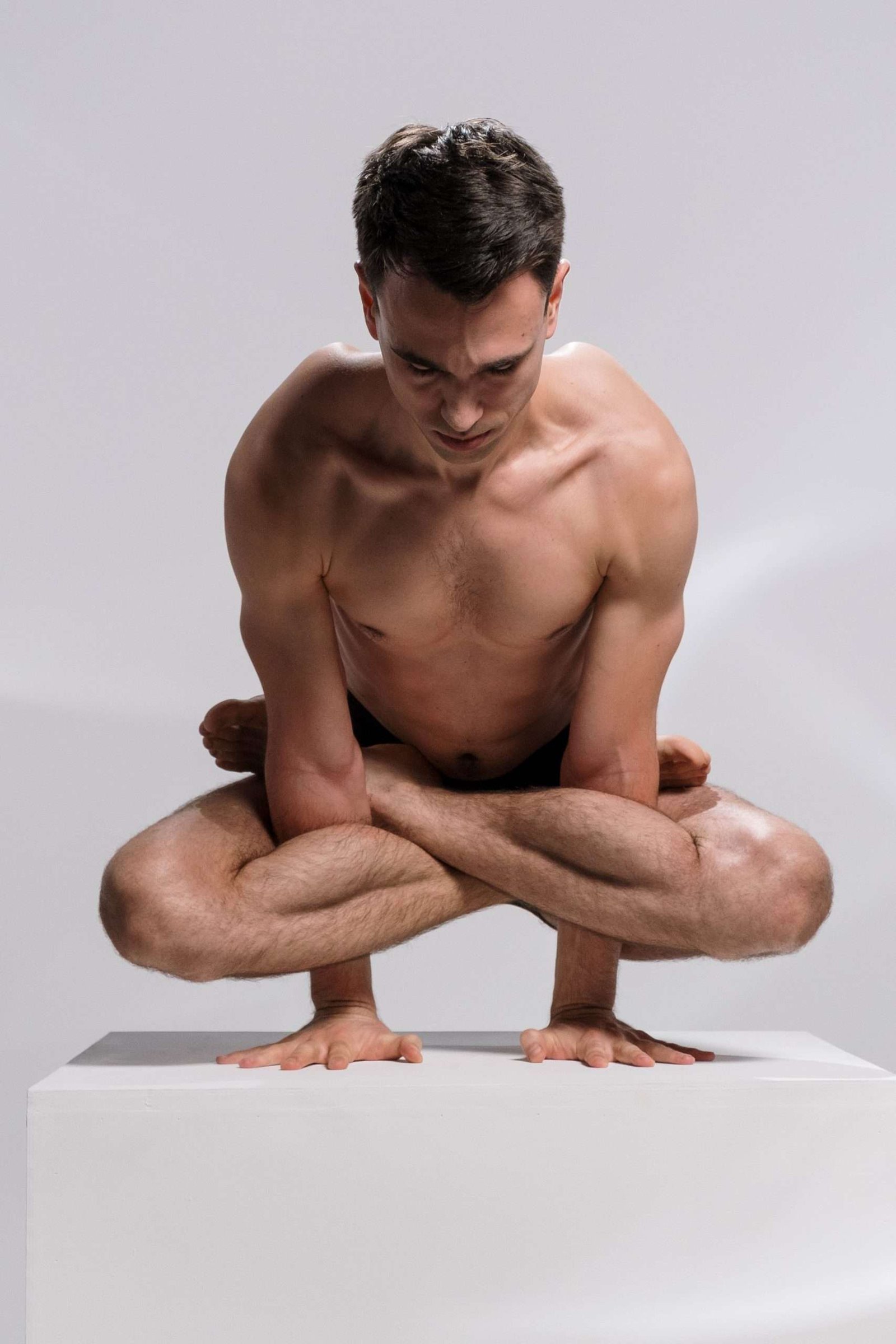
3. Hatha Yoga
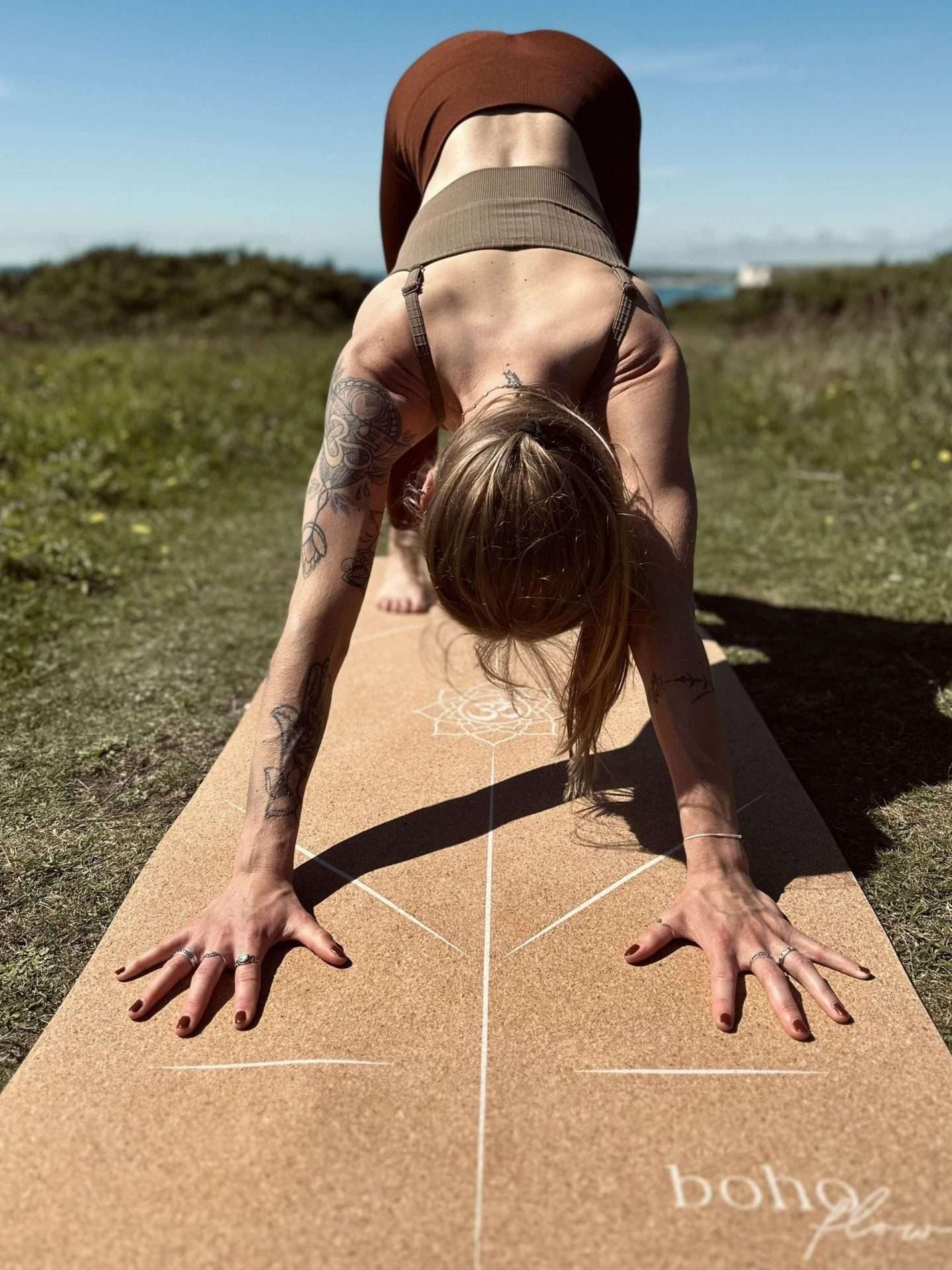
Hatha Yoga is a classic and gentle yoga style that focuses on aligning the body and breath. It’s suitable for all levels, making it a perfect choice for beginners. Traditionally, Hatha Yoga poses are held longer and there are no “Vinyasa” transition between these.
Hatha Yoga is one of the oldest and most traditional forms of yoga, with its origins dating back to the 15th century. The term “Hatha” comes from the Sanskrit words “ha” (sun) and “tha” (moon), symbolizing the balance between opposing forces. Hatha Yoga aims to harmonize the body and mind through a combination of physical postures (asanas), breathing techniques (pranayama), and meditation. It serves as the foundation for many modern yoga styles.
A Hatha yoga mat should offer comfort and a natural feel for a relaxed practice. Look for a mat with a soft surface that feels good to the touch. This will provide a cozy base for your asanas, especially during the longer holds. Your ideal mat is cushioned but not too thick, because it can make balancing harder.
4. Power Yoga
Power Yoga is a dynamic and intense style that combines strength, flexibility, and cardiovascular exercise. Influenced by a number of Western yoga teachers, Power Yoga deviates somewhat from the more traditional Yoga styles with its high-paced, fitness focused flows.
Power Yoga is a contemporary yoga style that emerged in the 1990s as a more intense and fitness-focused variation of Ashtanga Yoga. Developed to cater to individuals seeking a physically demanding workout, Power Yoga combines strength, flexibility, and cardio elements. The history of Power Yoga correlates with the rise of yoga as a form of exercise in the West, as it prioritizes physical fitness and athleticism.
Practitioners of Power Yoga need a mat that offers an excellent grip and durability. A sweat-proof mat with enhanced grip is essential for Power Yoga. The mat should be easy to clean, ensuring you can maintain a strong grip even during the sweatiest sessions.
If you practice Power Yoga, we have the perfect mat for you: Did you know that cork becomes grippier when wet? This makes it the most sweat-proof, non-slip mat out there. In addition, cork has naturally antimicrobial properties, which prevents mould and bacteria growth, keeping your mat extra clean and hygienic. Simply wipe your Boho Flow mat with a damp cloth and let it air dry.
Check out our article on 8 Benefits of Cork Yoga Mats for a more detailed overview of what exactly makes a cork yoga mat so special.
5. Yin/Restorative/Yoga Nidra
Yin, Restorative, and Yoga Nidra are deeply relaxing practices. The first two – Yin and Restorative Yoga – emphasize holding poses for extended periods to promote deep stretching and relaxation. Yoga Nidra translates as the “Yoga of Sleep” or “Yogic Sleep”. It is a guided practice that takes place in Savasana. These styles have their own unique differences and benefits. We have combined them in this section, simply based on the requirements for the type of yoga mat.
In order, Yin, Restorative, and Yoga Nidra are styles that emphasize deep relaxation, stress relief, and inner awareness. Yin Yoga is about deep stretching and mindfulness through long-held passive poses and minimal muscle activation. Restorative Yoga focuses on extreme relaxation and stress relief through supported, comfortable poses that often use a number of props. Yoga Nidra is a guided meditation technique for deep relaxation and inner transformation. These styles draw on the ancient roots of yoga philosophy and meditation to quieten mind and restore the body. These practices have evolved in response to the fast-paced, stress-filled modern world, with influences from traditional yoga and mindfulness practices.
For these styles, a comfortable and supportive mat is key. Consider a cork mat for its natural feel and earthy colours, which can enhance the grounding experience. Additionally, a thick mat with cushioning provides the necessary comfort during long-held postures.
Our Boho Flow 5 mm cork mat makes a good match for these yoga styles. It offers sufficient cushioning to be comfortable, especially when coupled with a blanket for extra warmth. The natural and non-toxic surface is ideal when spending several minutes in your Yin or Restorative poses. In addition, the cork pleases with grounding, earthy colours to make you feel truly connected.

Final Thoughts
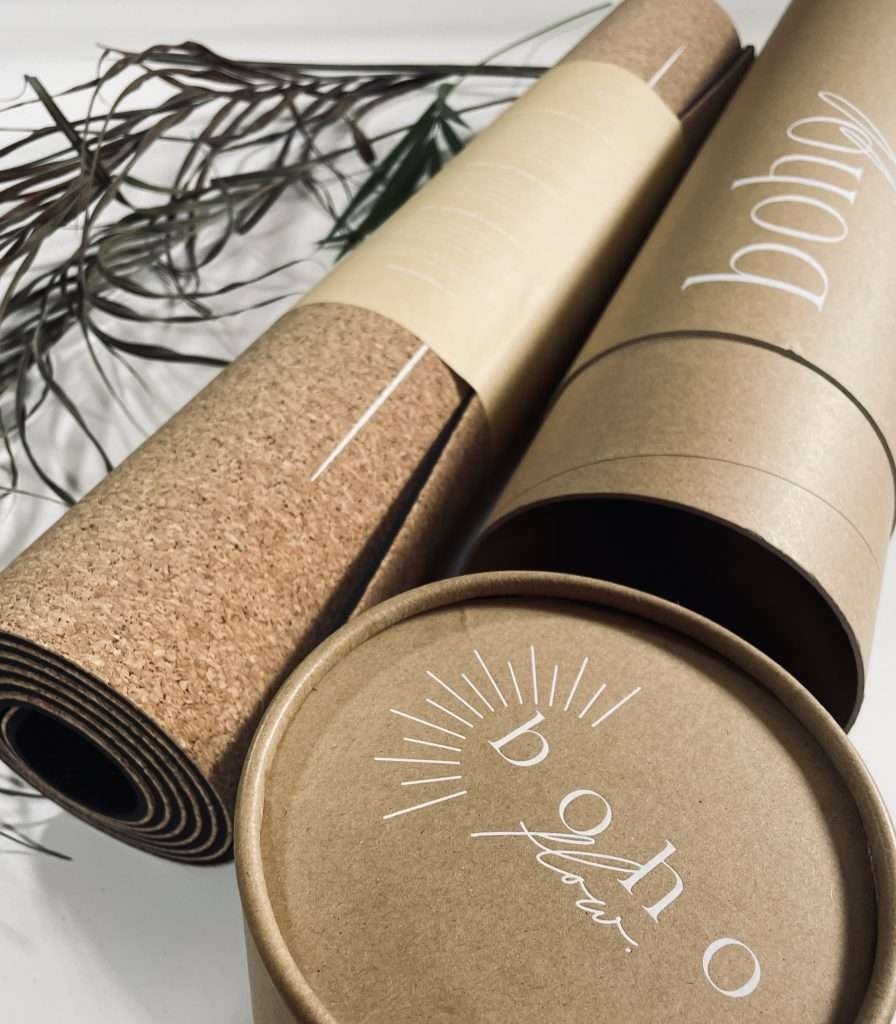
Selecting the right yoga style and mat is crucial for an enjoyable and effective yoga practice. Whether you prefer the dynamic flow of Vinyasa, the structure of Ashtanga, the gentleness of Hatha, the intensity of Power Yoga, or the restfulness of Yin, Restorative, or Yoga Nidra, the right mat can enhance your experience.
A mat that suits your style can help you maintain proper alignment, provide comfort, and reduce the risk of injury. Knowing what the best yoga mat is for your will lay the perfect foundation for your practice.
As you have seen, our Boho Flow signature cork yoga mat has many benefits for all the styles outlined here. Vinyasa yogis will enjoy the helpful alignment lines and a grippy surface. Ashtangis will benefit from the durability of our mat, as well as the non-slip cork surface. Power yogis will love the sweat-proof surface, durability, and antimicrobial properties for extra cleanliness. Hatha yogis will enjoy the perfect balance of cushioning vs. stability for balance. Our Yin, Restorative or Yoga Nidra practitioners, will appreciate the natural, earthy feel and texture of the cork and the cushioning of the natural rubber backing.



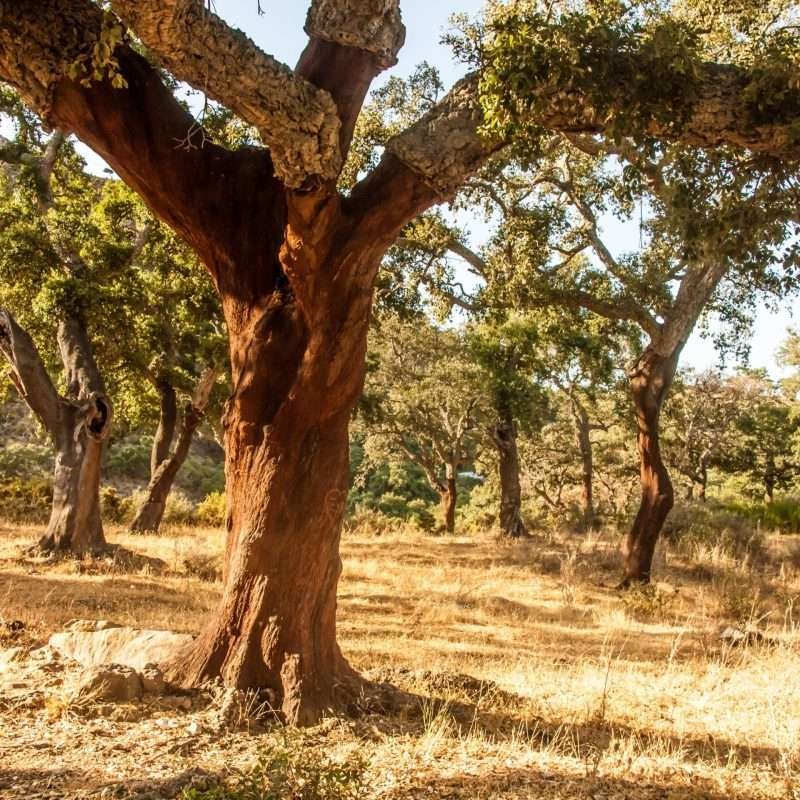

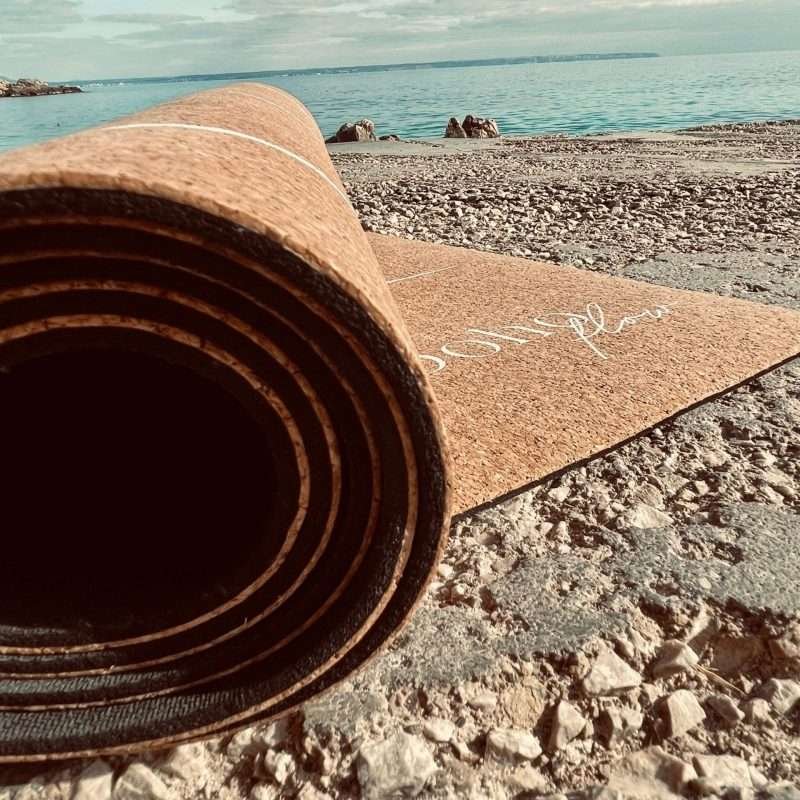

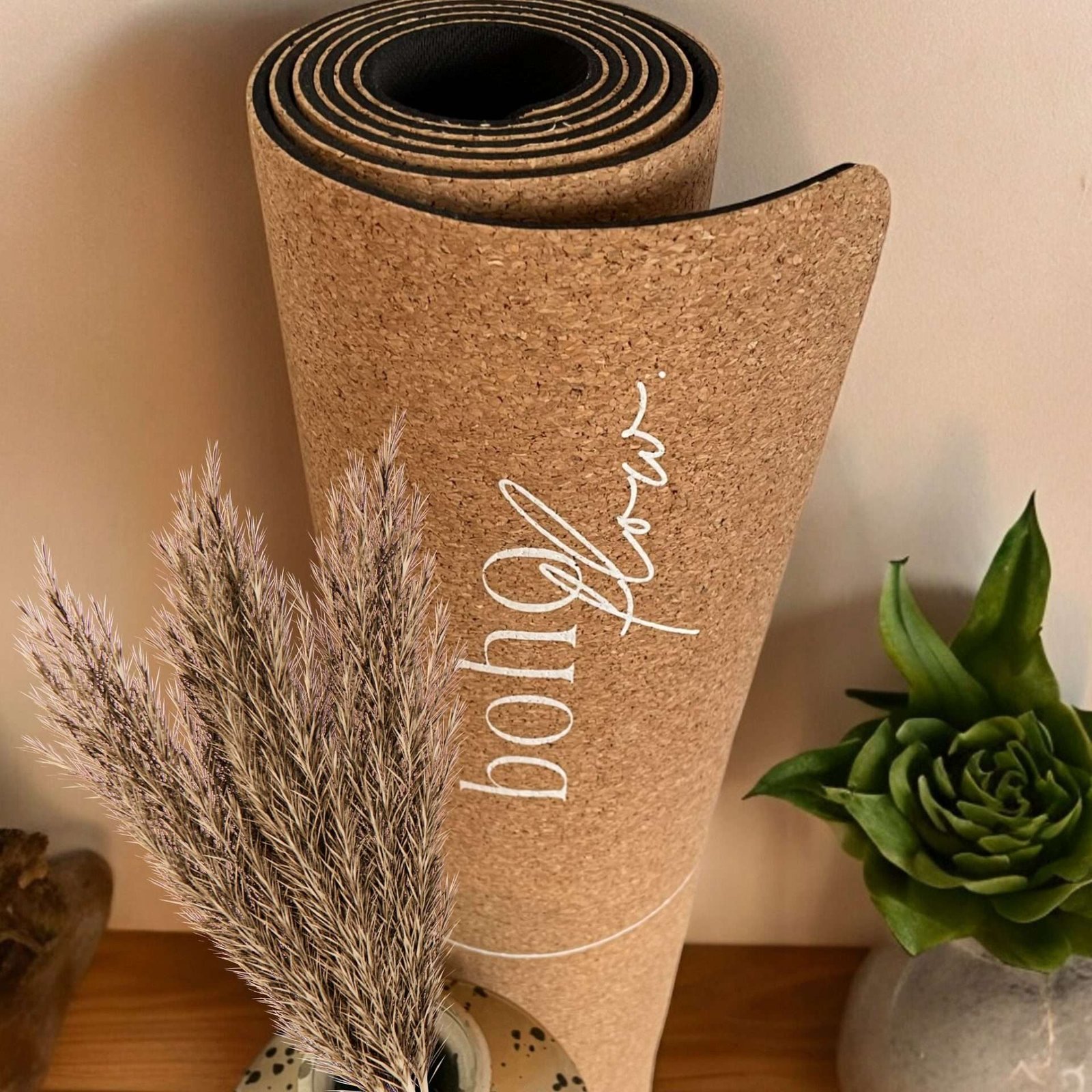
One thought on “A Guide to Common Yoga Styles and the Best Yoga Mat for Each”